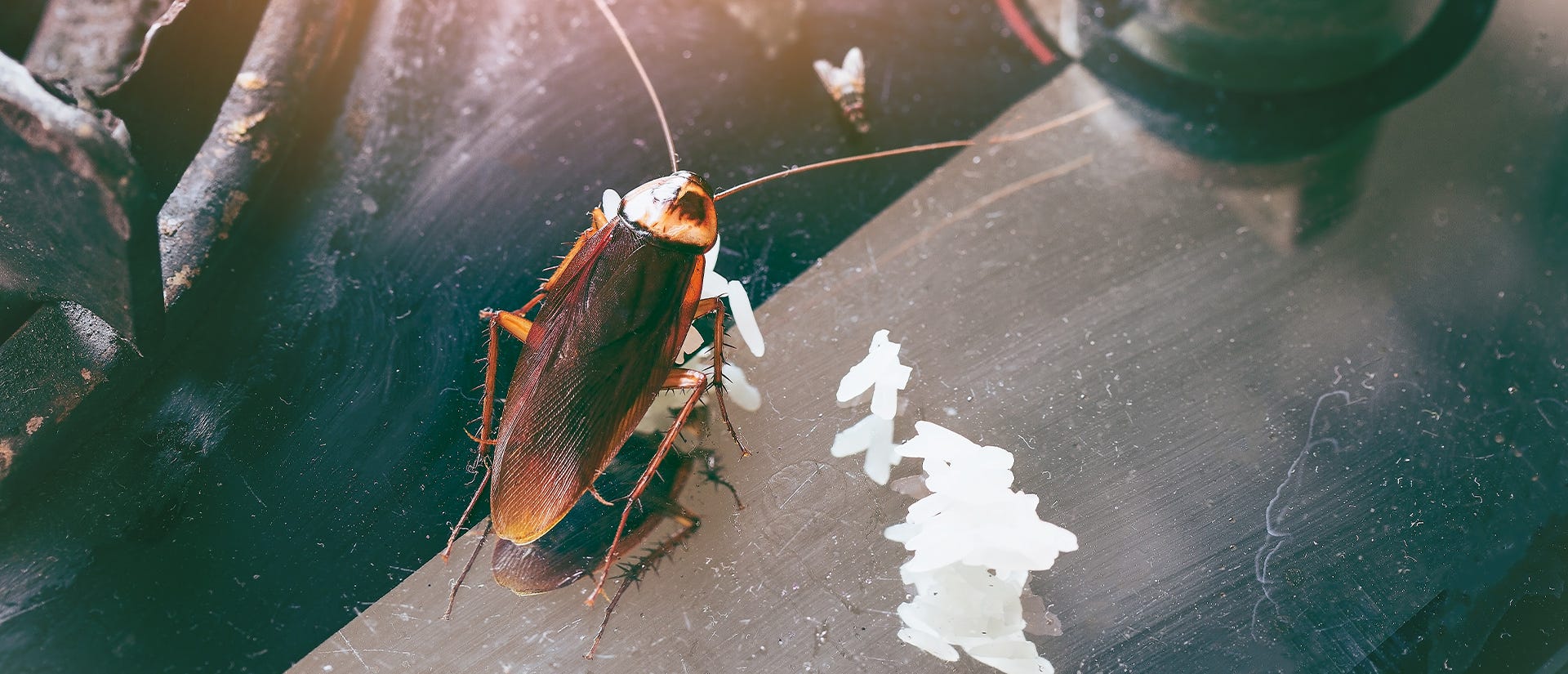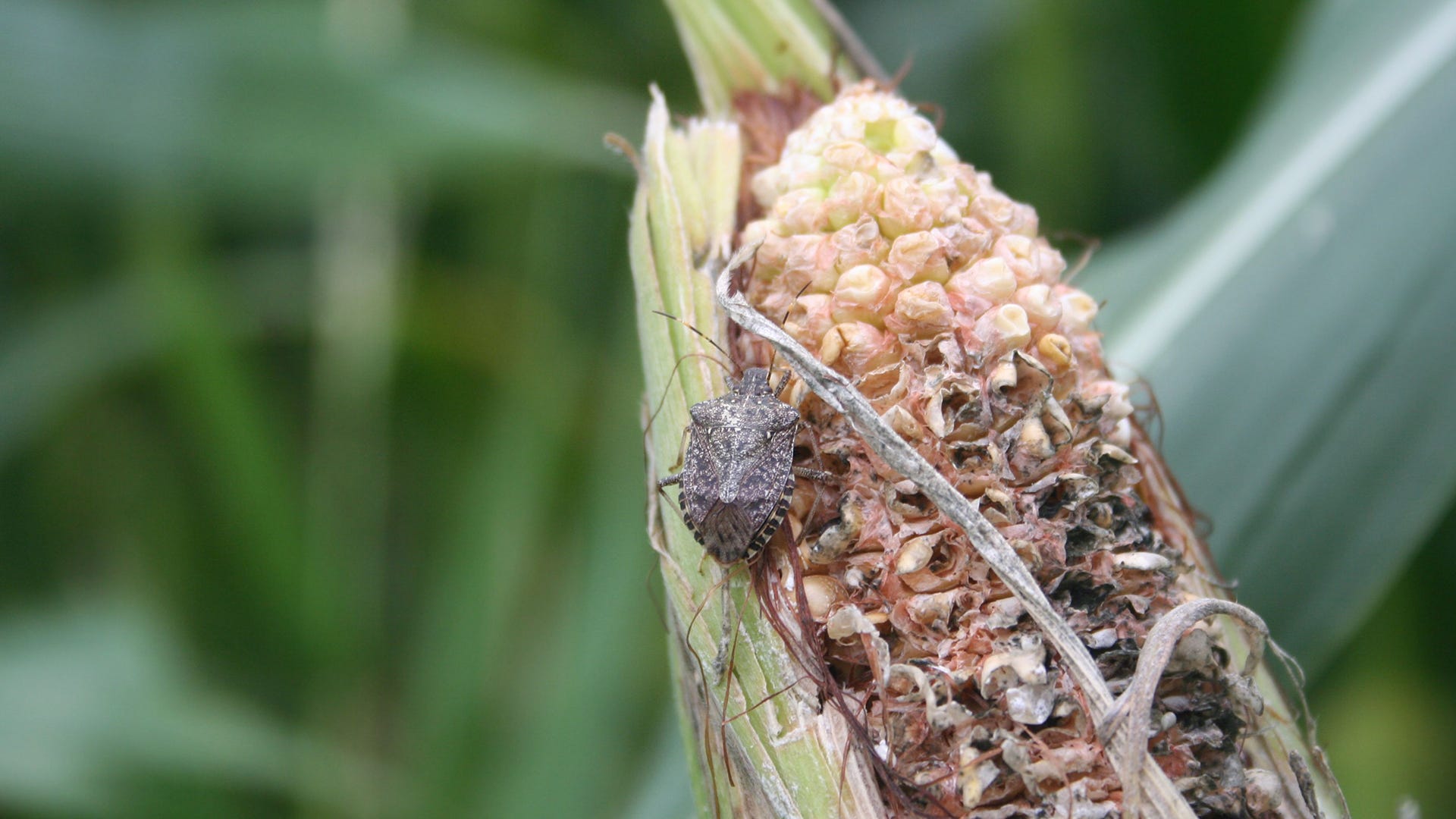Just seeing a cockroach can make you feel uncomfortable in your own home. Even the cleanest of houses can host cockroaches and that can feel unbelievably frustrating. How are they getting in and why are they targeting your home? There are a number of answers to these questions and many have simple solutions to keep these unwelcome pests out of your home for good.
What Are Cockroaches and Where Did They Come From?
The cockroach may be the most despised insect ever to invade homes in the United States. Also known as a palmetto bug or water bug, the cockroach that plagues homes across North America today did not originate here. Evidence suggests that the American cockroach was accidentally introduced during the 1600s by ships unloading cargo.
American cockroaches are oval-shaped insects that range in size from 1 ¼” to 2 ⅛”. These insects have six legs, antennae, and are a reddish-brown color. Cockroaches also possess wings that allow them to fly short distances, but they will usually be spotted crawling.
While cockroaches are not poisonous or venomous, they can cause harm to people through the spread of disease and allergens. They are known to spread 33 different kinds of bacteria, including E. coli and Salmonella. In addition, they can transmit parasitic worms to people and pets by crawling through and defecating in food or on cooking surfaces.
What Attracts Cockroaches?
The list of what attracts cockroaches is a long one and it might even be easier to make a list of what doesn’t attract them. In short, cockroaches are attracted to places that have food, water, and shelter, making our homes ideal as they have all three in abundance. Roaches are most often found in shady, humid areas both indoors and out such as flowerbeds, mulch piles, garages, kitchens, and bathrooms.
Their diet is extremely varied, making prevention measures more difficult than when dealing with other insect infestations. Cockroaches feed on food residue, crumbs, pet food, cardboard, fungi, algae, small insects, and even toenail clippings. They are most often attracted to food that is easily accessible. If drains haven’t been cleaned in a while or if there are crumbs under the toaster, or a trash can lid isn’t secured properly, cockroaches will be able to find them.
How Do They Get Inside?
You might be thinking, “but how did they get inside? I’m a clean person!”. There are dozens of ways cockroaches can venture into a home, even clean ones. Roaches are devious little creatures and can enter your home through cracks or holes in walls or foundations, by hitching a ride on clothing or backpacks, crawling through spaces beneath doors leading outside, rips in screens on windows or doors, air conditioner units not fitting properly, or even through your home’s plumbing. A cockroach’s slim build is designed to fit through small cracks and crevices, so even the smallest of entryways could allow one or several inside.
Signs of An Infestation

Most cockroaches aren’t subtle. Their reddish coloring helps homeowners quickly identify them as they scurry across the floor and other surfaces, but that isn’t all you need to look out for. There are four telltale signs you’re fighting a cockroach infestation.
- Sighting of Adult Cockroaches -- Spotting adult cockroaches is by far the most obvious way of discovering an infestation. You may see them near food or scurrying underneath appliances.
- Droppings -- When searching for cockroaches, you should always look in darker areas as they prefer to hide there. They will leave behind small droppings that have one blunt end and ridges on the sides.
- Egg Capsules -- The presence of roach eggs is alarming due to the prospect of having to deal with multiple generations. Each capsule is typically 8mm long and dark in color. You will find these in a variety of places, but they are commonly glued to surfaces near food.
- Musty Smell -- Cockroaches produce a pheromone that has a distinct musty smell. It may not always be obvious or strong, but any whiff of this smell should send you looking for supplemental signs of these pests.
How to Eliminate Cockroaches
There is no doubt cockroaches are especially hard to kill. Their natural adaptations make them resilient and as a result, take a more comprehensive approach to eliminate infestations of any size from your home. Use the following steps to ensure cockroaches are fully eliminated.
- Identify Problem Areas -- Take note of all the areas you’ve noticed roach activity and conduct a thorough search in spaces they may be lurking. Underneath or behind appliances, in pantries, and in basements are all places cockroaches frequently infest and should be checked carefully. Don’t forget to check the underside of these areas to search for egg capsules to ensure you’re fully addressing the infestation.
- Seal Cracks and Crevices -- Cracks in foundations, doors, or plumbing, spaces beneath doors, and snags in window or door screens are all potential entrance points. Seal these areas as much as possible to make it much more difficult for cockroaches to find an entrance. For the best results, search your items before bringing them inside your home as roaches will often hitch a ride in crates or carriers into your house.
- Reduce Populations -- Make an immediate dent in cockroach populations with roach bait or roach powder which allows you to eliminate many cockroaches at once. Eliminate the remaining populations by setting glue traps in multiple places. You can also use a spray as a perimeter strategy to eliminate roaches on contact.
- Clean, Clean, Clean -- Cockroaches are attracted to easily accessible food and food residues. Keep your home as clean as possible even if that means scrubbing drains and hard-to-reach areas underneath appliances. Once an infestation has been eliminated, clean areas where you noticed cockroaches to get rid of the scent they leave to attract more insects.
- Monitor Frequently -- Getting rid of cockroaches is no easy task, so it’s essential to monitor the situation, even after you think you’ve eliminated them completely. While you may have beaten one infestation, you could end up suffering from another if an entrance was missed or if cockroaches smell odors leftover from a previous infestation, which is sometimes unavoidable. Keeping an eye on your home by using glue traps will alert you almost immediately to their presence so you can stop them in their tracks before the situation gets out of control.
How to Prevent Cockroaches
It’s always best to prevent cockroaches from getting in in the first place instead of dealing with the damage and harm they can cause after the fact. Use the following tips below to ensure your chances of a cockroach infestation are as low as possible.
- Declutter -- Cockroaches love places where they can easily hide, so any amount of clutter, indoors or out, will become a major attractant. Tidy up your home to keep any hiding places to a minimum. This will save you time and effort in the future when searching for these pests.
- Develop a Cleaning Schedule -- Regularly clean any areas that a cockroach might use to feed or hide. By keeping these essential resources to a minimum for roaches, they will be less inclined to stay and breed in your home.
- Seal Food in Containers -- Cockroaches will often chew through the cardboard to get to the food inside and will have no qualms about crawling all over food left out on counters. Keep all food locked safely inside airtight containers to keep cockroaches and the diseases they carry away from your food.
- Repair Leaks or Cracks Immediately -- Any opening to the inside of your home is a potential entrance for cockroaches searching for food, water, or shelter. Repair any cracks, crevices, or leaks immediately to ensure no insect pests can enter your home through them.
- Keep All Areas Dry -- Dark, cool, wet areas are especially welcoming to cockroaches. Keep any areas in your home that are prone to getting wet as dry as possible. Cockroaches can live for several weeks without food if they have access to water. To keep their populations low, quickly dry wet or soggy areas and items to avoid attracting them.
Do You Feel More Prepared?
We hope so! Share your cockroach stories on our Facebook page and tell us how you defeated them. If you love getting coupons, access to exclusive sales, and the first look at new articles, sign up for our e-newsletter to get all of these things and more. Our learning center is also a great resource for learning more about the insects that may infest your home or garden.




